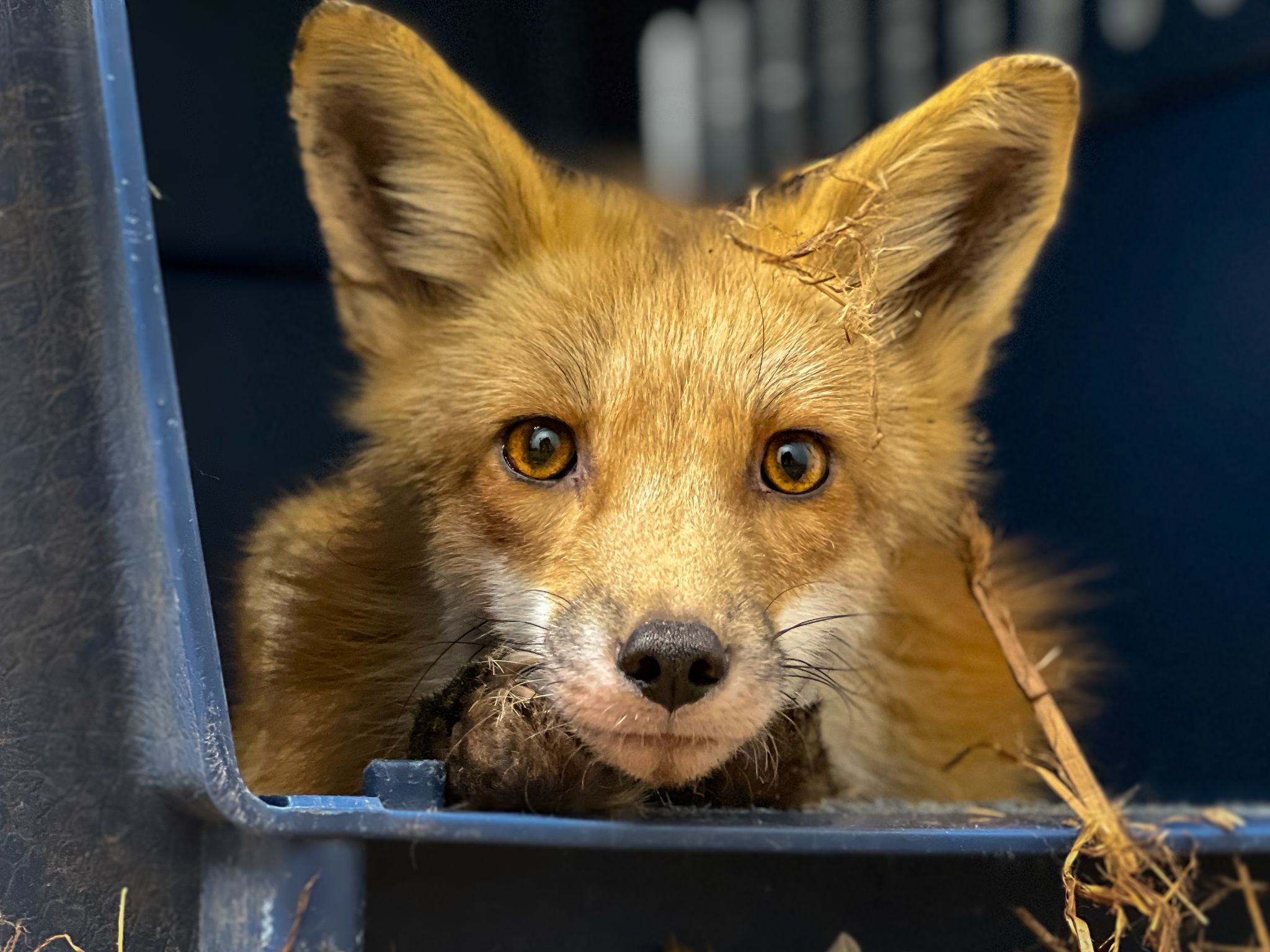Foxes in the Neighborhood
More and more ‘rural’ classified wildlife are commonly seen in Nebraska neighborhoods as urban sprawl develops more land for human use and foxes are no exception. These sleek omnivores have adapted to live in abandoned buildings and sheds, as well as small plots of land with few trees or bushes. They opportunistically feed on vegetation and small prey but oftentimes easily accessible human waste and compost. Foxes can be seen at any time of day, and tend to den underground beneath porches, in culverts or drainage areas, and sometimes even more populated areas such as golf courses or school yards.
Coexistence with foxes is essential. Embracing our new canid neighbors with education and empathy is integral to their survival and society.
Discouraging Foxes
- Always keep your pets on a leash or in a predator-proof fence when inside.
- NEVER deliberately feed a fox or other wild animal and discourage neighbors from doing so as well
- Securely cover garbage cans and compost bins.
- Remove fallen fruit from your yard.
- Eliminate opportunities for rabbits, rats, and mice to breed in and around your yard.
- Never deliberately approach a fox and teach children to respect all wildlife from a distance.
- Be a responsible pet owner. Keep house pets indoors and allow only controlled access to the outdoors.
- To prevent foxes from entering your yard, consider removing unnecessary brush, installing a motion-sensitive lighting system, or installing a predator-proof fence. To be effective, fences must be at least 6 feet tall, have no openings greater than four inches, and should be flush with the ground.
- If you do not want foxes around your home, let them know that they are not welcome. “Haze” them by shouting, making loud noises, and waving your arms.
Foxes, Pets & Small Children
Unprovoked negative encounters with foxes or other predators are rare. Always teach young children not to approach wildlife, as well as the difference between pets and wild animals.
Given all of the dangers for free-ranging pets outside, including cars, would-be thieves, neighbors who do not want pets on their property, wildlife, parasites and diseases, it is imperative that you be a responsible pet owner and keep your pets under your control at all times.
- When outside with your pets, always keep them on a leash or inside a coyote-proof fence.
- Keep cats inside. Keeping cats indoors protects them from disease, parasites, and danger, and greatly lengthens their life expectancy.
- Keep your dogs inside at night. Allow only controlled access to the outdoors (fenced yards and leashes).
- Ensure that your pets are up-to-date on vaccines and parasite prevention.
- Spay and neuter your pets to keep coyotes and other dogs from approaching
Foxes & Chickens
Chickens are very vulnerable to predators, including wildlife and domestic pets. A few easy steps can help protect your chickens, and make it less likely that they will be killed by predators.
Know that free-range chickens will always be susceptible to predation including by wildlife such as coyotes, foxes, raccoons, and hawks, and by neighborhood pets like dogs and cats. We aren't saying that your chickens shouldn't be free-range - but we do want chicken-lovers to realize that free-ranging chickens are never completely secure.
- A secure coop for night roosting is critical to keeping your chickens safe from wildlife. Make sure the coop is well constructed with no gaps, and that all of your chickens are in the coop with the door secured by nightfall every night. (Your coop should be a secure structure, even if it is enclosed by a fence. Two layers of security are better than one!)
- Most land predators will kill chickens at night. Make sure your coop is securely locked by dusk every night, with all of your chickens safely tucked inside.
- Fences enclosing chickens should be built securely. Fences should be buried at least 6" into the ground to keep predators from digging into the enclosure, and there should also be a top on the enclosure. Hawks and owls will also kill chickens, and raccoons can climb almost any fence, so a top on the enclosure increases the security of your chickens.
- For free-ranging chickens in urban areas, dogs can be trained to keep predators off the property. A large dog will generally deter a coyote or fox from coming onto your property.
Foxes with Mange
Sarcoptic mange is a common affliction in coyotes and foxes, and commonly occurs when they are immune –compromised for some other reason (starvation, illness, injury, etc.). It is characterized by hair loss and constant scratching. Minor cases of mange can be treated in the wild by dropping medicated bait. Severe cases of mange and cases of mange that are accompanied by other injuries or illness, will need to be treated in captivity. Please contact us for further information on treating mange.
Relocation
Trapping and relocating wildlife is not a humane or effective solution. Select the button below to learn more about why you should not trap and relocate wildlife.

